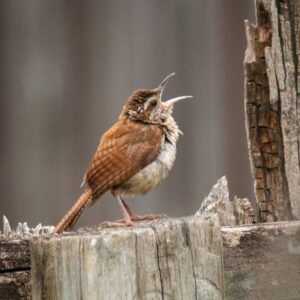Janequin, Le chant des oiseaux
 The French Renaissance composer Clément Janequin (c. 1485 – 1558) may be best known for his use of onomatopoeia. Onomatopoeia involves the mimicking of sounds occurring in nature—words like buzz, splash, or murmur. You probably know some longer examples with words that are not themselves onomatopoetic: “The moan of doves in immemorial elms” (Tennyson) or “[H]e heard the clack on stone and the leaping, dropping clicks of a small rock falling” (Hemingway).
The French Renaissance composer Clément Janequin (c. 1485 – 1558) may be best known for his use of onomatopoeia. Onomatopoeia involves the mimicking of sounds occurring in nature—words like buzz, splash, or murmur. You probably know some longer examples with words that are not themselves onomatopoetic: “The moan of doves in immemorial elms” (Tennyson) or “[H]e heard the clack on stone and the leaping, dropping clicks of a small rock falling” (Hemingway).
This has its uses in music. The Trolley Song sung by Judy Garland in Meet Me in St. Louis comes to mind as an example most would know. And when you get into the subject of text painting, particularly in the 19th century, you find many examples of composers using both instruments and voice to mimic wind, water, animals, footsteps, and just about anything else you can think of. In the 20th century you can add machinery to the list.
Le chant des oiseaux (the song of the birds) is probably Janequin’s best known work. Others include his La chasse, Les cris de Paris, and La bataille (or La guerre), evoking the hunt, street cries of Paris, and war. Janequin was not alone in pursuing this type of writing, but he specialized in it. His surviving works include some 250 chansons as opposed to only two masses and one motet.
The first record of Janequin (from 1505) indicates that he served as a clerk for Lancelot du Fau, the president of the court of inquests for the Parliament of Bordeaux. Upon Fau’s death in 1523, he entered the service of the bishop and was ordained in the priesthood at about that time. His biography in Groves notes:
His career was unorthodox for a great composer for he never held an important regular position either in a cathedral or in a court. This may explain the fact that no laments, either poetic or musical, were written on his death. The continuing popularity of his music was his greatest monument.




This was delightful!